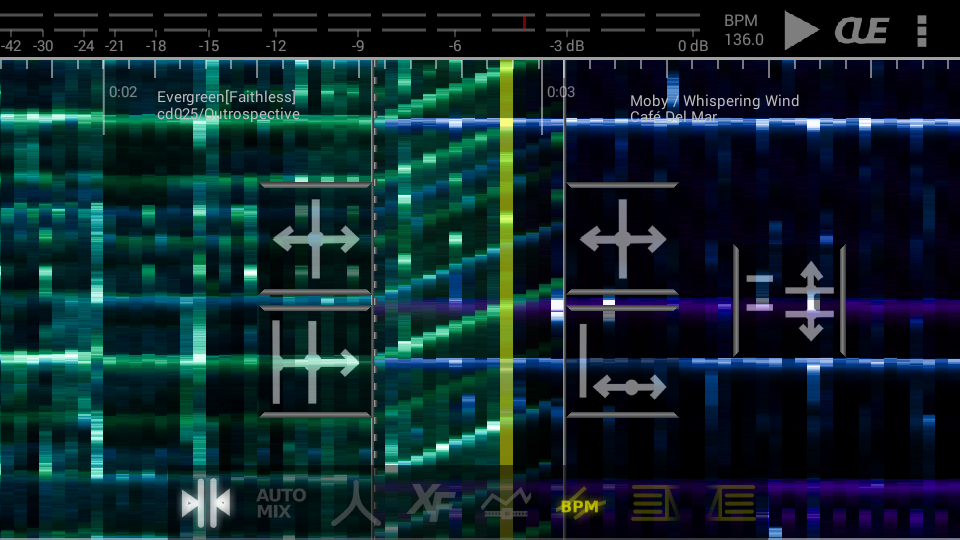Tempo unlocked transitions

 the tempo curve is a continuous line.
The tempos are matched during the transition.
the tempo curve is a continuous line.
The tempos are matched during the transition.
A tempo unlocked transition is a transition in which the tempo of the two songs act independently. The first song plays at its normal speed and the second songs also plays at its normal tempo. That means that no beat matching is performed. This can be useful for dropping the beat into the outro of a previous song, or quickly bringing the tempo up to speed.

 lock and
unlock the tempo
lock and
unlock the tempo
Below we discuss the impact a transition without matching tempo has.
Effect on the beatgraphs - The beatgraphs during such transitions are drawn correctly. The new song is drawn as an ordinary straight beatgraph. The old song is typically slanted. The visualisation is accurate in that it correctly draws the interaction between the two songs.
Effect on the timeline - The timeline becomes discontinous. As soon as the player enters the transition, the tempo is set to the new song. The old song keeps on playing at its old tempo
Manual tempos can still be set. In that case the timeline will honor the required tempo. However, in order to retain the same 'chaos' during the tempo free transition, the outgoing track will be played faster or slower.
Effect on the automixer - The automixer tries to find the best match between the non-beat-matched tracks. The result is likely unsatisfactory; but it will be the best energy match between the two tracks (within a distance of 4 bars to the left and 4 bars to the right).
Effect on the automated crossfading envelope - Also the automated crossfading envelope is aware of these transitions and will use the correct energy levels to maximize the volume between the two channels.
Effect on the song envelopes - If the difference in tempo between the native tempo and the new tempo is sufficiently large, then the song envelope will be drawn incorrectly.
Interaction with Cues - Cuepoints are correctly positioned in the transition
The cue alignment lines do not honor the slanted beatgraph. This is because it might be actually beneficial to drop the beat into the rhythmical extension of the previous track.

 the tempo curve is a discontinuous
line. The tempos are no longer matched during the transition.
the tempo curve is a discontinuous
line. The tempos are no longer matched during the transition.